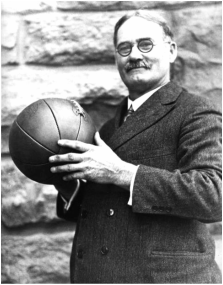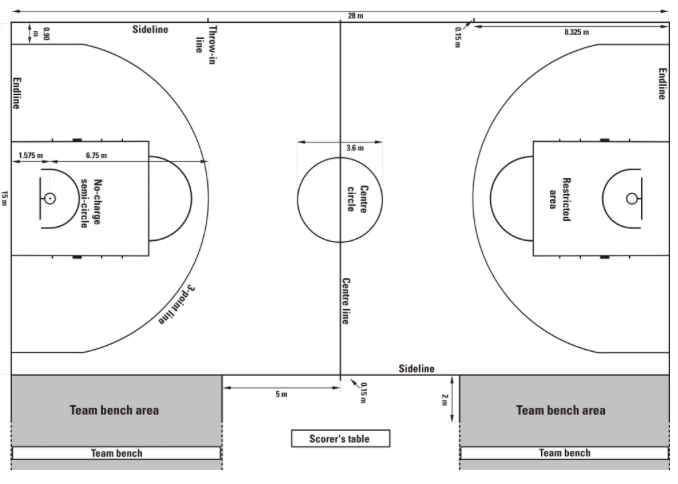History
Current Rule Overview
AimTo score points by shooting into the opposing team's basket, and to prevent the opposing team from doing the same
PositionsAll positions are able to move anywhere on court, and are often determined by height; taller players will often play 'centres', players of average height play 'forwards', and the shorter players are often 'guards'
Movement of the BallDuring the game, only the hands are able to control the ball. This being said, the ball can move in any direction, having been passed through way of a throw, roll, tap or dribble.
Dribbling refers to the action of repeatedly bouncing the ball against the ground and back into the downward-facing palm of the hand. During a game, the ball is either:
|
Number of PlayersFive players from each team are allowed on the court at any one time, with up to seven reserve players seated on the team bench available for substitution at point in the game
OfficialsOne referee and one or two umpires are the key officials in the game, supported by a scorer, assistant scorer, timer and shot clock official. The referee inspects the eligibility of all equipment and aspects of the game, and the umpires are responsible for decisions on violations of the rules
FoulsFouls are defined as the illegal actions of any player on the court against any member of the opposing team. These revolve around violations of basketball's 'non-contact' nature.
Any action believed to be unreasonably aggressive, or presenting an unfair advantage to a particular player, can be deemed a foul, classified as either:
|
Winning the GameThe game is won by the team with the most points once the allotted time period has elapsed
ScoringA point is scored upon thrown entry of the ball into the opposing team's basket. Goals are worth two points mostly, but three points are awarded for a successful shot from behind the three-point line. One point is also scored for free throws
Violations/PenaltiesViolations occur in the form of a disobedience of the rules of the game, including:
|
Size and Weight Specifications
Playing ball: 75-80cm circumference, 600-650 grams
Basket: 3.05 metres above floor
Playing court: 28 metres x 15 metres
Basket: 3.05 metres above floor
Playing court: 28 metres x 15 metres


